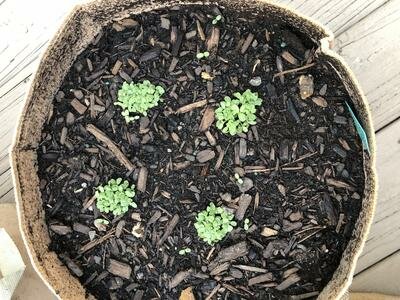How to Tell If a Piece of Jewelry Is 'Real'
Is that flea market ring valuable, or just sparkly?


Credit: NPDstock . Shutterstock.com
So you’ve inherited some jewelry from a relative, or got a potential bargain on a few pieces at a flea market or estate sale. How do you know if it’s costume jewelry or the real stuff? You could take it to a jeweler, appraiser, or pawn shop, yes—or, you can try a few at-home techniques to help you tell whether you’ve got something of value on your hands.
After working in a jewelry store for several years, I learned several tricks of the trade from certified gemologists and jewelers with decades of experience. To ensure they were still considered best practices, I also checked in with a few other pro jewelers, who also shared some additional tips for figuring out whether a piece is made out of solid silver or gold, and whether diamonds and other gemstones are authentic. Here are some ways to tell the difference between costume and “real” jewelry.
How to tell if jewelry real gold or silver
There are several things to look for that will help you determine whether you have a piece of costume jewelry, something that’s gold- or silver-plated, or something made out of solid gold or silver. Here’s where to start:
Look for stamp markings
In the United States, the Federal Trade Commission (FTC) requires that all gold, silver, and platinum jewelry be marked based on its purity. This rule goes all the way back to the 1906 passage of the National Gold and Silver Marking Act, so technically, any jewelry manufactured in the U.S. since then should be marked. If the piece is from outside of the U.S. or from before 1906, it may not have the same markings.
Basically, you’re looking for small stamped letters and/or numbers somewhere inconspicuous on the piece of jewelry, says Jonathan Goldberg, founder and CEO of jewelry manufacturer Kimberfire. Places like:
Rings: On the inside of the band
Necklaces and bracelets: On the clasp or the small connecting rings
Earrings: On the posts or backings
Markings will likely be the precious metal’s karat or number based on the millesimal fineness system, which measures the purity of gold, silver, and platinum alloys in parts per thousand of pure metal. So, for example, a piece of jewelry that is made from 75% gold would have a millesimal fineness of 750. Here are the most common markings, courtesy of Meserlian:
10k: 10 karat yellow gold
14k, 583, or 585: 14 karat yellow or white gold
18k or 750: 18 karat yellow or white gold
24k or 999: 24 karat yellow gold
GF: Gold filled (i.e. gold plated and not solid gold)
GFP: Rolled gold plate (i.e. gold plated and not solid gold)
925: Sterling silver
PT or 950: Platinum
Ti: Titanium
These markings are small, so you may need to use a magnifying glass to see them, says Barkev Meserlian, CEO of jewelry manufacturer Barkev’s and a 46-year veteran of the jewelry industry.
But Matt Harris—who runs a pearl design business, a jewelry consignment business in Austin called Curated Fine Jewelry, and trained at the Gemological Institute of America, specializing in peals—cautions against fully relying on a stamp. “If someone were to create ‘fake’ gold or silver, they'd likely add a stamp to try to fool the buyer,” he says. For this reason, it’s a good idea to do additional tests, like the ones below.
Use a magnet
Hold a magnet up to the metal on a piece of jewelry. “Gold and silver in their purest forms are not magnetic,” Meserlian says. “If the piece is drawn to a magnet, then it is probably gold-plated [or silver-plated]” and has a magnetic base.
Platinum jewelry is a little trickier because it’s rarely made with 100% pure platinum and typically mixed with similar metals (palladium, ruthenium, rhodium, iridium, osmium) or non-precious base metals (copper or cobalt), according to the FTC. So if a piece you suspect is platinum ends up being magnetic, that doesn’t necessarily mean that it’s not also real.
Examine the color
If you have a piece that’s silver in color, but aren’t sure whether it’s actually silver or white gold, platinum, or titanium, Meserlian recommends taking a closer look at the color:
Silver: Warmer color
White gold: Slight yellowish tone
Platinum: Whitest and brightest
Titanium: Darker and more muted
Look for tarnishing
Tarnishing can also be helpful for identifying or differentiating between the types of metal. Here’s what Meserlian and Goldberg say to look for:
Solid silver: Will self-oxidize slowly over the years, forming a layer of black tarnish that will rub off
Silver-plated pieces: May have streaks or uneven patches showing through from the metal base when cleaned
Solid gold (yellow or white): Won’t tarnish
Gold-plated pieces: May discolor over time, particularly where they rub against skin
Platinum: Resistant to tarnishing
Titanium: Resistant to tarnishing
Wear and tear
Check the piece for signs of wear and tear. “Usually, the use of mismatched metal in plated jewelry gets exposed after the plated exterior has been scratched or worn off,” Meserlian says. Meanwhile, costume jewelry tends to scratch easily, while harder metals like gold and platinum are more resistant to surface wear, Goldberg says.
Feel the weight
According to Meserlian, pieces made from solid gold or silver are heavier than plated ones, which tend to be lighter due to being hollow and having a base metal core. As for their weight, platinum is the densest of these metals, while aluminum is relatively light. Silver and white gold are in the middle, although white gold is generally slightly heavier because of its composition, he says.
The ceramic test for gold
Another way to test a piece to see if it’s real gold is to scratch it lightly against an unglazed ceramic tile. According to Meserlian, real gold will leave a gold color streak, while a gold-plated piece will leave a dark mark.
How to tell if pearls, diamonds, and gemstones are real
Now that you’ve checked the metal, it’s time to see whether the pearls, diamonds, and/or gemstones on a piece of jewelry are real.
The tooth test for pearls
The quickest way to determine whether a pearl is real is to gently rub one against the bottom of your tooth. If the pearl feels like sandpaper, Harris says that it’s likely real.
But what if you don't want to put someone's pearls in your mouth? “Rubbing two of them against each other gives a similar sensation,” he says.
The size and weight of pearls
If you come across pearls that are super lightweight or extremely large, Harris says that they're not real.
The brand of pearls
Check to see if there’s a brand name stamped on your pearls. “Many famous costume jewelry brands never used precious metals or gemstones, so simply seeing the brand stamp will be a definitive clue,” Harris says.
The fog test for diamonds
Breathe on the stone. “A real diamond won’t stay fogged for long because it quickly disperses heat,” Goldberg says. Cubic zirconia, on the other hand, fogs up and takes some time to clear.
Look at the sparkle
To tell the difference between diamond, moissanite, and cubic zirconia, Ty Wilson, Co-Founder of CustomMade, an online jeweler specializing in custom engagement rings, suggests looking at the stone in the sunlight or under a bright light, and assess the level of sparkle.
Moissanite will produce colorful sparkles, like a rainbow, while cubic zirconia will look dull compared to a diamond. Cubic zirconia is also not as scratch resistant as a diamond, so it will show more wear over time, he says.
Natural versus lab-grown diamonds
Although natural and lab-grown diamonds are chemically identical, there is a way that you may be able to tell them apart, Wilson says. Grab a magnifying glass and look for a laser inscription on the narrow band along the perimeter of the stone (i.e. the girdle). “These are very small, so you'll have to look carefully and they're only on some certified diamonds,” he says. “You can look up the grading report by the inscription.” Most lab diamonds have inscriptions starting with LG, whereas most natural diamonds will have inscriptions of all numbers.
Look for air bubbles in colored gemstones
Without professional equipment, determining the authenticity of rubies, emeralds, and sapphires is tricky. But one thing you can do is to look for obvious air bubbles inside the stone—which Goldberg says can suggest it's synthetic.
Costume jewelry can also be beautiful and valuable
Costume jewelry may not be made from real precious metals or gemstones, but that doesn’t mean it doesn’t have value. If you’ve inherited jewelry, there’s a good chance that at least some of it is costume jewelry, which Harris says was huge in the mid-20th century. “As such there are millions of pieces out there, many are incredibly beautiful and gorgeously crafted,” he says.
There's nothing wrong with wearing "faux" jewelry. In fact, Chanel was famous for creating meticulously crafted faux pearl designs, Harris says. “The problem is when people try to sell you faux as real, and as a responsible consumer, knowing how to tell the difference is a very helpful skill to acquire.”

 FrankLin
FrankLin 
























.jpg)






